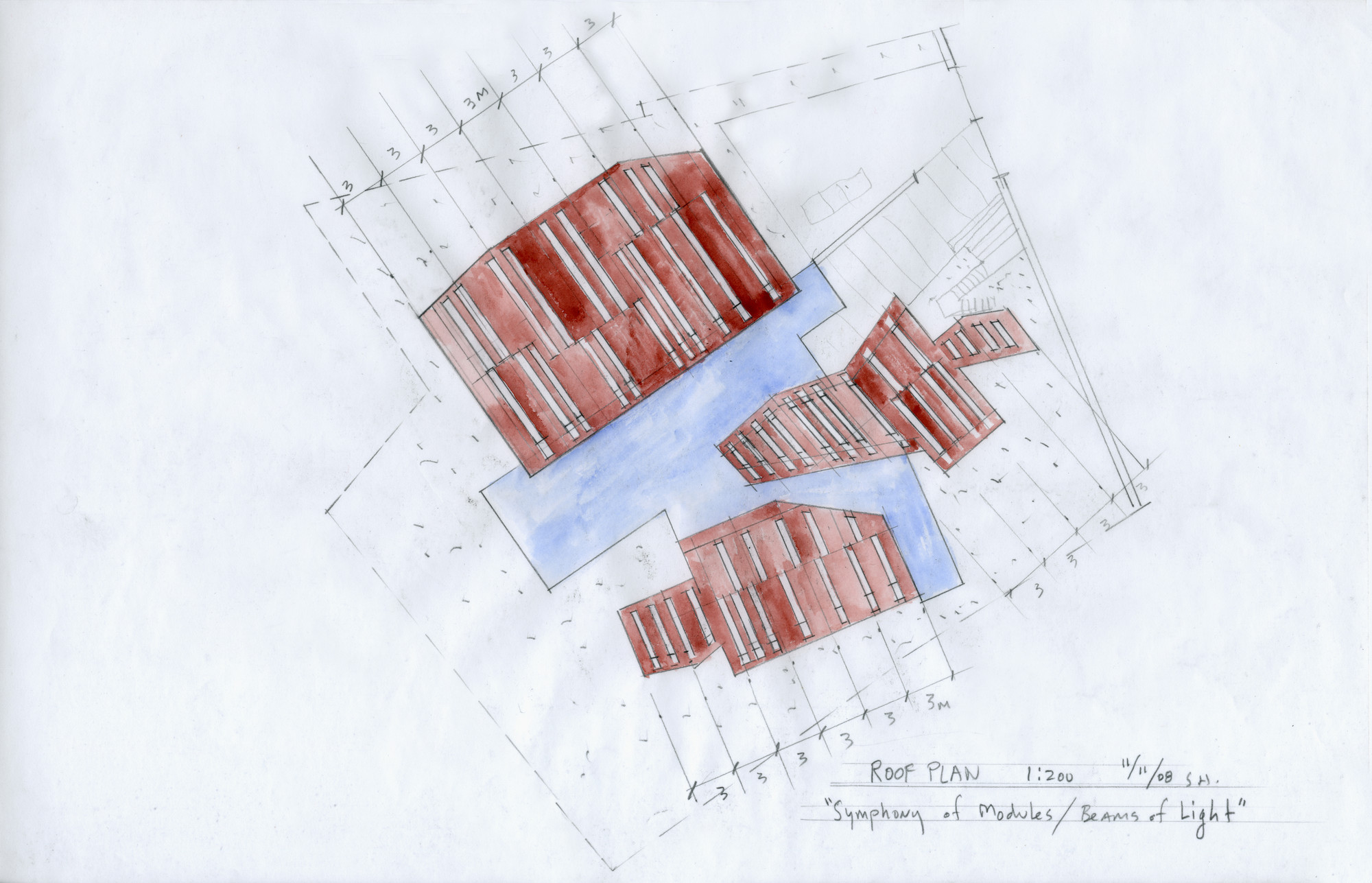
Awarded yesterday with the 2013 Pulitzer Prize for criticism, Philip Kennicott has built an honorable reputation as a art and architecture critic for Washington Post’s Style section. One of his most recent works, Music Holl: A Copper Clad Pavilion in Seoul recounts the inspiration behind Steven Holl’s award-winning Daeyang Gallery and House in Seoul.
Designed as an experiment on “the architectonics of music,” the basic geometry of the Daeyang Gallery and House was inspired by Istvan Anhalt’s 1967 Symphony of Modules - a uniquely transcribed sheet of music found in John Cage’s contemporary music compendium, Notations. Reminiscent of the “blocky and shard-like shapes” of Anhalt’s sketch, Holl’s design features three copper-clad pavilions punctured by a symphony of carefully placed, rectangular skylights that animate the interior with “bars of light”. As Kennicott describes, Holl uses music as a “powerful metaphor for the dynamic unfolding of experience” (captured in this film by Spirit of Space).
Read Kennicott’s Music Holl: A Copper Clad Pavilion in its entirety here on Dwell. Continue after the break to compare Steven Holl's sketch above with Anhalt’s Symphony of Modules.


